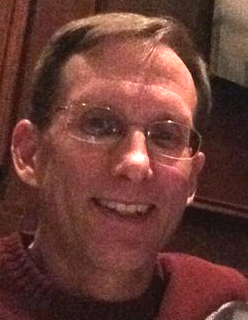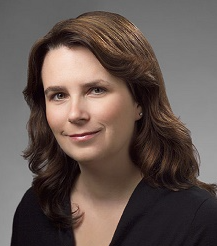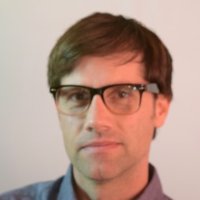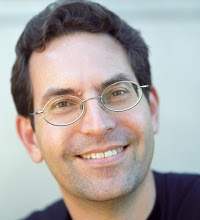 I've never written about Snapchat. I didn't really get the point of its namesake app, the point of which was to post content that automatically disappeared. I knew it was wildly popular among teens and celebrities, both of whom undoubtedly had more content they wished wouldn't persist than an old fogey like me, but it just seemed purposely trivial. With their recent introduction of Spectacles, though, I figured Snap Inc. (as the company renamed itself) deserves a closer look. The Wall Street Journal broke the story (as Business Insider also did) with an in-depth look at Spectacles. It is not a new app, nor some new service on its existing app (which continues to be called Snapchat), but rather a piece of hardware: a pair of sunglasses that can record short videos. Users can record ten to thirty second videos, taken from the sunglass's perspective...
I've never written about Snapchat. I didn't really get the point of its namesake app, the point of which was to post content that automatically disappeared. I knew it was wildly popular among teens and celebrities, both of whom undoubtedly had more content they wished wouldn't persist than an old fogey like me, but it just seemed purposely trivial. With their recent introduction of Spectacles, though, I figured Snap Inc. (as the company renamed itself) deserves a closer look. The Wall Street Journal broke the story (as Business Insider also did) with an in-depth look at Spectacles. It is not a new app, nor some new service on its existing app (which continues to be called Snapchat), but rather a piece of hardware: a pair of sunglasses that can record short videos. Users can record ten to thirty second videos, taken from the sunglass's perspective...
News
Health Care Needs Some Spectacles
- Login to post comments
- News
How A Free Mobile App Fights Ebola And Other Global Epidemics
 The enormity and severity of the West African Ebola epidemic that began in 2014 is hard to fathom. The outbreak resulted in more than 11,000 deaths, and hundreds of thousands of people affected by loss. Providing adequate care for any medical condition depends on information, but even more so when dealing with an epidemic that is as severe, dangerous, and fast-moving as Ebola. This is the story of how a dispersed global health IT community banded together to solve the enormous, unique information challenges presented by Ebola...
The enormity and severity of the West African Ebola epidemic that began in 2014 is hard to fathom. The outbreak resulted in more than 11,000 deaths, and hundreds of thousands of people affected by loss. Providing adequate care for any medical condition depends on information, but even more so when dealing with an epidemic that is as severe, dangerous, and fast-moving as Ebola. This is the story of how a dispersed global health IT community banded together to solve the enormous, unique information challenges presented by Ebola...
- Login to post comments
- News
I Really Wish You Wouldn't Do That
 Digital rectal exams (DREs) typify much of what's wrong with our health care system. Men dread going to go get them, they're unpleasant, they vividly illustrate the physician-patient hierarchy, and -- oh, by the way -- they apparently don't actually provide much value. By the same token, routine pelvic exams for healthy women also don't have any proven value either. The recent conclusions about DREs come from a new study. One of the researchers, Dr. Ryan Terlecki, declared: "The evidence suggests that in most cases, it is time to abandon the digital rectal exam (DRE). Our findings will likely be welcomed by patients and doctors alike"...
Digital rectal exams (DREs) typify much of what's wrong with our health care system. Men dread going to go get them, they're unpleasant, they vividly illustrate the physician-patient hierarchy, and -- oh, by the way -- they apparently don't actually provide much value. By the same token, routine pelvic exams for healthy women also don't have any proven value either. The recent conclusions about DREs come from a new study. One of the researchers, Dr. Ryan Terlecki, declared: "The evidence suggests that in most cases, it is time to abandon the digital rectal exam (DRE). Our findings will likely be welcomed by patients and doctors alike"...
- Login to post comments
- News
Good Things Can Come from Open Source Projects that Fail
 Without realizing it, I joined the open source movement in 1999 during the midst of the Kosovo refugee crisis. I was part of a team helping route aid supplies to local humanitarian organizations running transit camps across Albania. These are the camps that refugees often arrived at first before being moved to larger, more formal camps. We found that refugees in the transit camps were not being registered or provided with any way of alerting family members of their whereabouts...
Without realizing it, I joined the open source movement in 1999 during the midst of the Kosovo refugee crisis. I was part of a team helping route aid supplies to local humanitarian organizations running transit camps across Albania. These are the camps that refugees often arrived at first before being moved to larger, more formal camps. We found that refugees in the transit camps were not being registered or provided with any way of alerting family members of their whereabouts...
- Login to post comments
- News
Clarifying MACRA Certification Requirements for Hospitals
 With all the changes happening to Meaningful Use, Quality Measurement, and MACRA in 2016, I’ve been asked many questions by many organizations to help them plan for the future. As I’ve said many times, one of the great challenges we have is that the 2015 Edition final rule has an enormous scope extending beyond Meaningful Use with the notion that it can be coupled to every government healthcare IT program. Standards need to be based on requirements and specific use cases with little optionality, so creating a broadly scoped rule before the use cases are known just doesn’t work...
With all the changes happening to Meaningful Use, Quality Measurement, and MACRA in 2016, I’ve been asked many questions by many organizations to help them plan for the future. As I’ve said many times, one of the great challenges we have is that the 2015 Edition final rule has an enormous scope extending beyond Meaningful Use with the notion that it can be coupled to every government healthcare IT program. Standards need to be based on requirements and specific use cases with little optionality, so creating a broadly scoped rule before the use cases are known just doesn’t work...
- Login to post comments
- News
Navigating the Challenges of International Teamwork
 I started my open source work from Oregon, USA working on a project in the "Republic" of Texas. While that, at first glance, does not sound international in nature, I can assure you that Oregon and Texas might as well be different countries. I experienced both the joy and frustration of working with users from both places that had big cultural differences, as well as overlapping needs. This early experience laid the groundwork for the future, where I got to work at the international level on OpenEMR, an electronic healthcare records system...
I started my open source work from Oregon, USA working on a project in the "Republic" of Texas. While that, at first glance, does not sound international in nature, I can assure you that Oregon and Texas might as well be different countries. I experienced both the joy and frustration of working with users from both places that had big cultural differences, as well as overlapping needs. This early experience laid the groundwork for the future, where I got to work at the international level on OpenEMR, an electronic healthcare records system...
- Login to post comments
- News
4 Big Ways Companies Benefit from Having Open Source Program Offices
 In the first article in my series on open source program offices, I took a deep dive into what an open source program office is and why your company might need one. Next I looked at how Google created a new kind of open source program office. In this article, I'll explain a few benefits of having an open source program office. At first glance, one big reason why a company not in the business of software development might more enthusiastically embrace an open source program office is because they have less to lose. After all, they're not gambling with software products that are directly tied to revenue...
In the first article in my series on open source program offices, I took a deep dive into what an open source program office is and why your company might need one. Next I looked at how Google created a new kind of open source program office. In this article, I'll explain a few benefits of having an open source program office. At first glance, one big reason why a company not in the business of software development might more enthusiastically embrace an open source program office is because they have less to lose. After all, they're not gambling with software products that are directly tied to revenue...
- Login to post comments
- News
Open Data Leaders in Government Finally Have a Support Network – Each Other
 New Zealand’s Open Government Data Programme Leader, Paul Stone, reflects on his time at the Open Data Leaders Network: what he learnt, who he met and how peer-learning has helped him find better solutions to problems. There are support networks for many professions that people can get involved with or lean on for support. Lawyers, accountants, IT, information management, policy making – you name it, there will be a local network out there for you to join...
New Zealand’s Open Government Data Programme Leader, Paul Stone, reflects on his time at the Open Data Leaders Network: what he learnt, who he met and how peer-learning has helped him find better solutions to problems. There are support networks for many professions that people can get involved with or lean on for support. Lawyers, accountants, IT, information management, policy making – you name it, there will be a local network out there for you to join...
- Login to post comments
- News
Artificial Intelligence Docs May Need Some Good AI Lawyers
 A recent post highlighted how artificial intelligence (AI) is already playing important roles in health care, and concluded that expanded use of AI may be ready for us before we are ready for it. One example of the kind of problem we'll face is: who would we sue if care that an AI recommended or performed went wrong? Because, you know, always follow the money. Last week Stanford's One Hundred Year Study On Artificial Intelligence released its 2016 report, looking at the progress and potential of AI, as well as some recommendations for public policy...
A recent post highlighted how artificial intelligence (AI) is already playing important roles in health care, and concluded that expanded use of AI may be ready for us before we are ready for it. One example of the kind of problem we'll face is: who would we sue if care that an AI recommended or performed went wrong? Because, you know, always follow the money. Last week Stanford's One Hundred Year Study On Artificial Intelligence released its 2016 report, looking at the progress and potential of AI, as well as some recommendations for public policy...
- Login to post comments
- News
The Joy of Mentoring
 Since 2016 is the 20th year I’ve served as CIO, I’ve given a great deal of thought to the various careers I’ve had and the roadmap for the 20 next years of my working life. In my late teens and 20s I was an entreprenuer running a 35 person software company while doing my medical and graduate school training. I was also a winemaker, home builder and engineer. In my early 30’s I was an Emergency physician, software coder, and data analyst. In my mid 30’s as a CIO, I focused on architecture, high reliability computing, and centralization of IT service delivery. In my early 40’s, I focused on disaster recovery, interoperability, and educational technologies..
Since 2016 is the 20th year I’ve served as CIO, I’ve given a great deal of thought to the various careers I’ve had and the roadmap for the 20 next years of my working life. In my late teens and 20s I was an entreprenuer running a 35 person software company while doing my medical and graduate school training. I was also a winemaker, home builder and engineer. In my early 30’s I was an Emergency physician, software coder, and data analyst. In my mid 30’s as a CIO, I focused on architecture, high reliability computing, and centralization of IT service delivery. In my early 40’s, I focused on disaster recovery, interoperability, and educational technologies..
- Login to post comments
- News